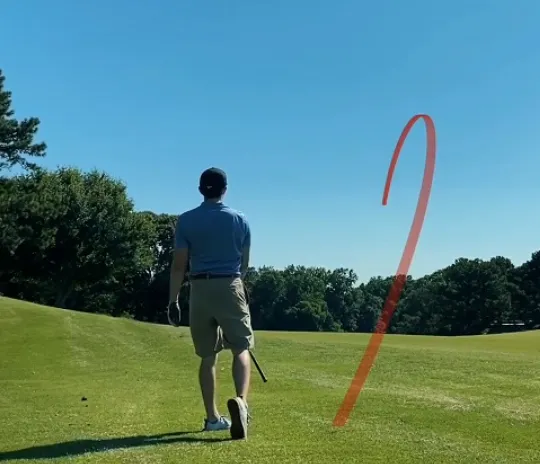One of the most fascinating aspects of golf is the ability to shape the flight of the ball. Beyond hitting it straight, experienced players often rely on two controlled shot shapes— the fade and the draw— to navigate the course and manage different challenges. These shots may look similar to a casual observer, but they serve distinct purposes and require different setups. If you’ve ever wondered what separates a fade from a draw, this breakdown will help you understand how each one works and when to use them.
What Is a Fade?
A fade is a controlled shot that curves gently from left to right for a right-handed golfer (the opposite for left-handers). Think of it as guiding the ball on a subtle arc through the sky. Many players favor a fade because it feels predictable and easier to control, especially under pressure.
Grip and Setup: A slightly weaker grip—rotating both hands a touch toward the target—naturally keeps the clubface a little more open at impact.
Alignment: Aim just left of your target if you’re right-handed. This gives the ball room to curve back toward the intended line.
Swing Path: The swing should travel slightly from outside to inside, which puts a left-to-right spin on the ball and creates that reliable fade.
What Is a Draw?
The draw is the mirror image of the fade. For right-handers, it starts right of the target and gently works back to the left. This shot tends to travel farther than a fade because of its lower spin rate, making it popular for players who want extra distance without sacrificing accuracy.
Grip and Setup: A slightly stronger grip—rotating both hands just a bit away from the target—encourages the clubface to close slightly at impact.
Alignment: Position your stance slightly to the right of your target (for right-handers) to give the ball room to move left.
Swing Path: Swing from inside to outside along your stance line. This promotes right-to-left spin and produces the draw’s characteristic curve.
Why Learn Both?
While some golfers naturally hit one shot shape more consistently than the other, learning both opens up more options on the course. A fade can be especially useful when approaching a pin tucked behind a bunker on the right side, while a draw can help you work around obstacles on the left or add some extra yards off the tee.
Mastering Shot Shaping
Perfecting a fade or draw doesn’t happen overnight—it takes practice, patience, and a good understanding of your swing mechanics. Start with small adjustments, and don’t force the motion. Over time, you’ll discover which feels more comfortable and how to use each effectively.
Golf isn’t just about distance; it’s about creativity and precision. By learning the difference between a fade and a draw, you’ll not only expand your skill set but also add a new layer of strategy to your game.













